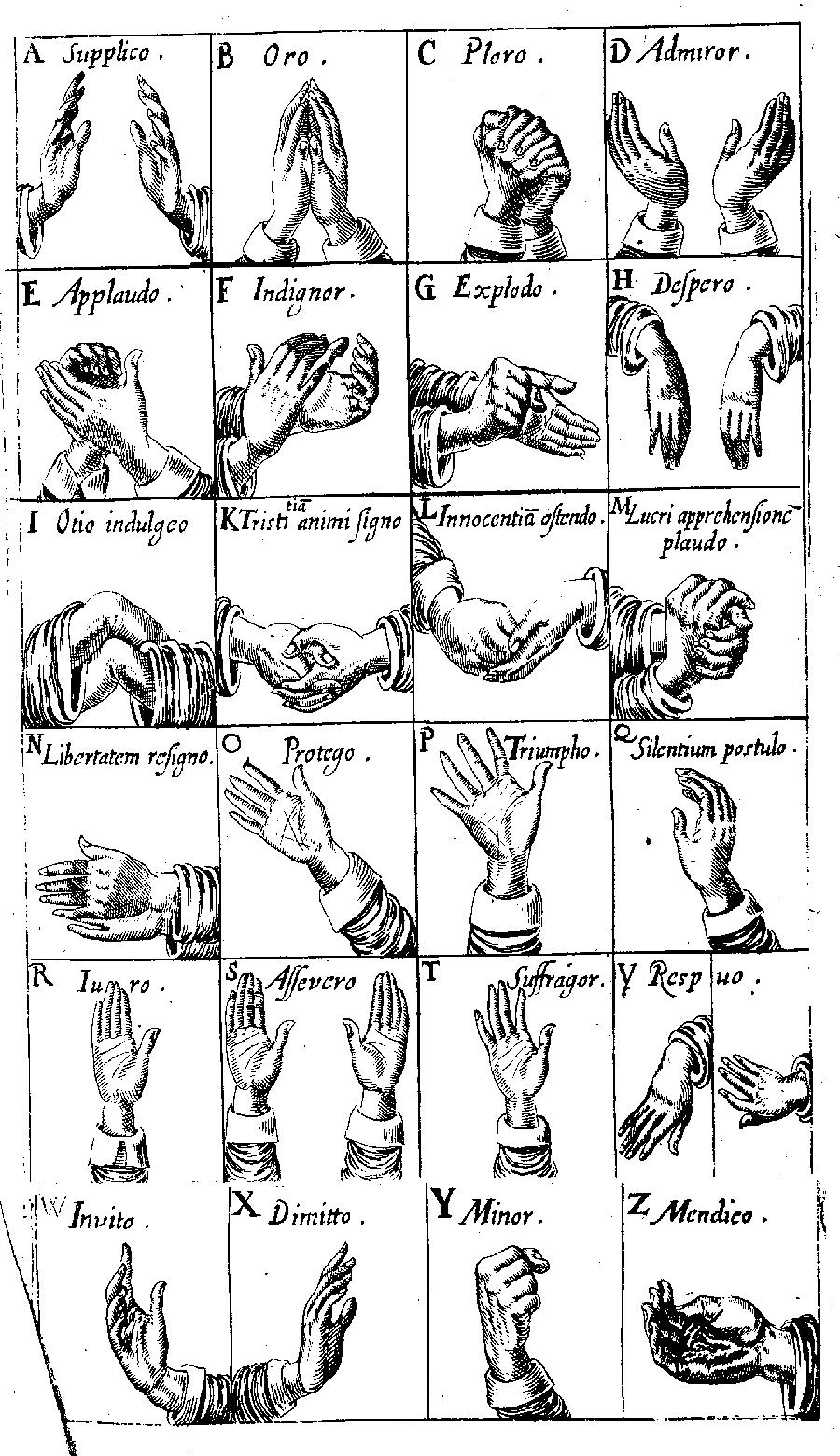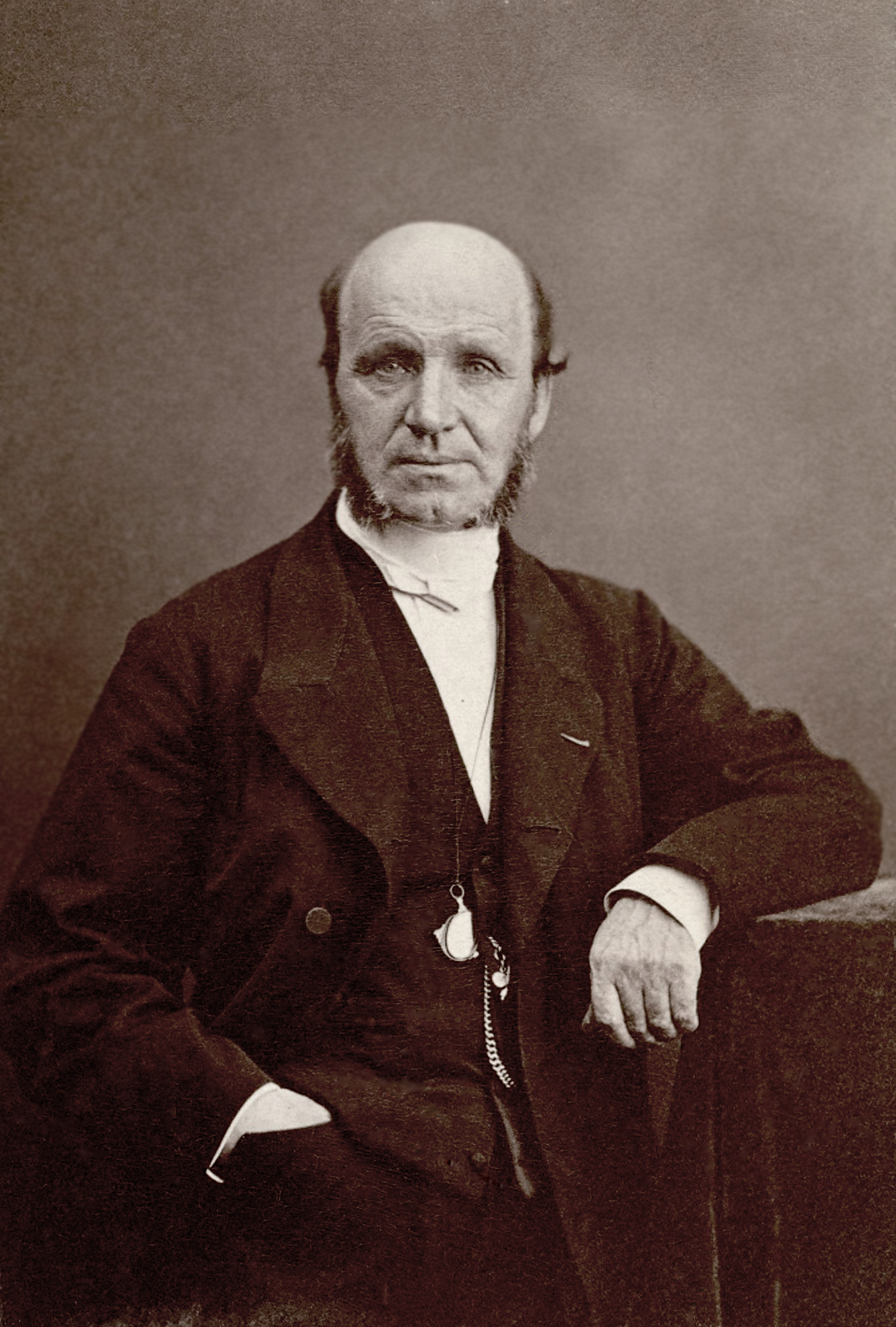|
John Bulwer
John Bulwer (baptised 16 May 1606 – buried 16 October 1656 ) was an English physician and early Baconian natural philosopher who wrote five works exploring the Body and human communication, particularly by gesture. He was the first person in England to propose educating deaf people, the plans for an Academy he outlines in ''Philocophus'' and ''The Dumbe mans academie''. Life John Bulwer was born in London in 1606 and continued to work and live in the city until his death in October 1656 when he was buried in St Giles in the Fields, Westminster. He was the only surviving son of an apothecary named Thomas Bulwer and Marie Evans of St. Albans. On her death in 1638 John Bulwer inherited some property in St Albans from which he derived a small income. Although information about his education is unclear, there is evidence that he was probably educated in Oxford as an unmatriculated student in the 1620s. His known friends had nearly all been educated there and he supported Will ... [...More Info...] [...Related Items...] OR: [Wikipedia] [Google] [Baidu] |
William Faithorne
William Faithorne, often "the Elder" (161613 May 1691), was an English painter and engraver. Life Faithorne was born in London and was apprenticed to William Peake. On the outbreak of the Civil War Faithorne accompanied his master into the king's service, and being made prisoner at Basing House, he was confined for some time to Aldersgate, where, however, he was permitted to follow his profession of engraver, and among other portraits did a small one of George Villiers, 1st Duke of Buckingham. At the earnest solicitation of his friends Faithorne very soon regained his liberty, but only on condition of retiring to France, where he received instruction from Robert Nanteuil Robert Nanteuil (; 1623 – 9 December 1678) was a French portrait artist: engraver, draughtsman and pastellist to the court of Louis XIV. Life He was born in Reims in 1623, [...More Info...] [...Related Items...] OR: [Wikipedia] [Google] [Baidu] |
William Laud
William Laud (; 7 October 1573 – 10 January 1645) was a bishop in the Church of England. Appointed Archbishop of Canterbury by Charles I in 1633, Laud was a key advocate of Charles I's religious reforms, he was arrested by Parliament in 1640 and executed towards the end of the First English Civil War in January 1645. A firm believer in episcopalianism, or rule by bishops, "Laudianism" refers to liturgical practices designed to enforce uniformity within the Church of England, as outlined by Charles. Often highly ritualistic, these were precursors to what are now known as high church views. In theology, Laud was accused of Arminianism, favouring doctrines of the historic church prior to the Reformation and defending the continuity of the English Church with the primitive and medieval church, and opposing Calvinism. On all three grounds, he was regarded by Puritan clerics and laymen as a formidable and dangerous opponent. His use of the Star Chamber to persecute opponents su ... [...More Info...] [...Related Items...] OR: [Wikipedia] [Google] [Baidu] |
British Library
The British Library is the national library of the United Kingdom and is one of the largest libraries in the world. It is estimated to contain between 170 and 200 million items from many countries. As a legal deposit library, the British Library receives copies of all books produced in the United Kingdom and Ireland, including a significant proportion of overseas titles distributed in the UK. The Library is a non-departmental public body sponsored by the Department for Digital, Culture, Media and Sport. The British Library is a major research library, with items in many languages and in many formats, both print and digital: books, manuscripts, journals, newspapers, magazines, sound and music recordings, videos, play-scripts, patents, databases, maps, stamps, prints, drawings. The Library's collections include around 14 million books, along with substantial holdings of manuscripts and items dating as far back as 2000 BC. The library maintains a programme for content acquis ... [...More Info...] [...Related Items...] OR: [Wikipedia] [Google] [Baidu] |
Regicidal
Regicide is the purposeful killing of a monarch or sovereign of a polity and is often associated with the usurpation of power. A regicide can also be the person responsible for the killing. The word comes from the Latin roots of ''regis'' and ''cida'' (''cidium''), meaning "of monarch" and "killer" respectively. In the British tradition, it refers to the judicial execution of a king after a trial, reflecting the historical precedent of the trial and execution of Charles I of England. The concept of regicide has also been explored in media and the arts through pieces like ''Macbeth'' (Macbeth's killing of King Duncan) and ''The Lion King''. History In Western Christianity, regicide was far more common prior to 1200/1300. Sverre Bagge counts 20 cases of regicide between 1200 and 1800, which means that 6% of monarchs were killed by their subjects. He counts 94 cases of regicide between 600 and 1200, which means that 21.8% of monarchs were killed by their subjects. He argues t ... [...More Info...] [...Related Items...] OR: [Wikipedia] [Google] [Baidu] |
Orbicularis Oculi
The orbicularis oculi is a muscle in the face that closes the eyelids. It arises from the nasal part of the frontal bone, from the frontal process of the maxilla in front of the lacrimal groove, and from the anterior surface and borders of a short fibrous band, the medial palpebral ligament. From this origin, the fibers are directed laterally, forming a broad and thin layer, which occupies the eyelids or palpebræ, surrounds the circumference of the orbit, and spreads over the temple, and downward on the cheek. Structure There are at least 3 clearly defined sections of the orbicularis muscle. However, it is not clear whether the lacrimal section is a separate section, or whether it is just an extension of the preseptal and pretarsal sections. Orbital orbicularis The orbital portion is thicker and of a reddish color; its fibers form a complete ellipse without interruption at the lateral palpebral commissure; the upper fibers of this portion blend with the frontalis and corrugator ... [...More Info...] [...Related Items...] OR: [Wikipedia] [Google] [Baidu] |
Duchenne De Boulogne
Guillaume-Benjamin-Amand Duchenne (de Boulogne) (September 17, 1806 in Boulogne-sur-Mer – September 15, 1875 in Paris) was a French neurologist who revived Galvani's research and greatly advanced the science of electrophysiology. The era of modern neurology developed from Duchenne's understanding of neural pathways and his diagnostic innovations including deep tissue biopsy, nerve conduction tests ( NCS), and clinical photography. This extraordinary range of activities (mostly in the Salpêtrière) was achieved against the background of a troubled personal life and a generally indifferent medical and scientific establishment. Neurology did not exist in France before Duchenne and although many medical historians regard Jean-Martin Charcot as the father of the discipline, Charcot owed much to Duchenne, often acknowledging him as "''mon maître en neurologie''" (my master in neurology). The American neurologist Dr. Joseph Collins (1866–1950) wrote that Duchenne found neurolo ... [...More Info...] [...Related Items...] OR: [Wikipedia] [Google] [Baidu] |
Kenelm Digby
Sir Kenelm Digby (11 July 1603 – 11 June 1665) was an English courtier and diplomat. He was also a highly reputed natural philosopher, astrologer and known as a leading Roman Catholic intellectual and Blackloist. For his versatility, he is described in John Pointer's ''Oxoniensis Academia'' (1749) as the "Magazine of all Arts and Sciences, or (as one stiles him) the Ornament of this Nation". Early life and education Digby was born at Gayhurst, Buckinghamshire, England. He was of gentry stock, but his family's adherence to Roman Catholicism coloured his career. His father, Sir Everard, was executed in 1606 for his part in the Gunpowder Plot. Kenelm was sufficiently in favour with James I to be proposed as a member of Edmund Bolton's projected Royal Academy (with George Chapman, Michael Drayton, Ben Jonson, John Selden and Sir Henry Wotton). His mother was Mary, daughter of William Mushlo. His uncle, John Digby, was the first Earl of Bristol. He went to Gloucester Hall, Ox ... [...More Info...] [...Related Items...] OR: [Wikipedia] [Google] [Baidu] |
Empirical Evidence
Empirical evidence for a proposition is evidence, i.e. what supports or counters this proposition, that is constituted by or accessible to sense experience or experimental procedure. Empirical evidence is of central importance to the sciences and plays a role in various other fields, like epistemology and law. There is no general agreement on how the terms ''evidence'' and ''empirical'' are to be defined. Often different fields work with quite different conceptions. In epistemology, evidence is what justifies beliefs or what determines whether holding a certain belief is rational. This is only possible if the evidence is possessed by the person, which has prompted various epistemologists to conceive evidence as private mental states like experiences or other beliefs. In philosophy of science, on the other hand, evidence is understood as that which '' confirms'' or ''disconfirms'' scientific hypotheses and arbitrates between competing theories. For this role, it is important that ... [...More Info...] [...Related Items...] OR: [Wikipedia] [Google] [Baidu] |
Mnemonic
A mnemonic ( ) device, or memory device, is any learning technique that aids information retention or retrieval (remembering) in the human memory for better understanding. Mnemonics make use of elaborative encoding, retrieval cues, and imagery as specific tools to encode information in a way that allows for efficient storage and retrieval. Mnemonics aid original information in becoming associated with something more accessible or meaningful—which, in turn, provides better retention of the information. Commonly encountered mnemonics are often used for lists and in auditory form, such as short poems, acronyms, initialisms, or memorable phrases, but mnemonics can also be used for other types of information and in visual or kinesthetic forms. Their use is based on the observation that the human mind more easily remembers spatial, personal, surprising, physical, sexual, humorous, or otherwise "relatable" information, rather than more abstract or impersonal forms of informa ... [...More Info...] [...Related Items...] OR: [Wikipedia] [Google] [Baidu] |
Fingerspelling
Fingerspelling (or dactylology) is the representation of the letters of a writing system, and sometimes numeral systems, using only the hands. These manual alphabets (also known as finger alphabets or hand alphabets) have often been used in deaf education and have subsequently been adopted as a distinct part of a number of sign languages. There are about forty manual alphabets around the world. Historically, manual alphabets have had a number of additional applications—including use as ciphers, as mnemonics and in silent religious settings. Forms of manual alphabets As with other forms of manual communication, fingerspelling can be comprehended visually or tactually. The simplest visual form of fingerspelling is tracing the shape of letters in the air and the simplest tactual form is tracing them on the hand. Fingerspelling can be one-handed such as in American Sign Language, French Sign Language and Irish Sign Language, or it can be two-handed such as in British Sign Languag ... [...More Info...] [...Related Items...] OR: [Wikipedia] [Google] [Baidu] |
Gesture
A gesture is a form of non-verbal communication or non-vocal communication in which visible bodily actions communicate particular messages, either in place of, or in conjunction with, speech. Gestures include movement of the hands, face, or other parts of the body. Gestures differ from physical non-verbal communication that does not communicate specific messages, such as purely expressive displays, proxemics, or displays of joint attention.Kendon, Adam. (2004) ''Gesture: Visible Action as Utterance''. Cambridge: Cambridge University Press. Gestures allow individuals to communicate a variety of feelings and thoughts, from contempt and hostility to approval and affection, often together with body language in addition to words when they speak. Gesticulation and speech work independently of each other, but join to provide emphasis and meaning. Gesture processing takes place in areas of the brain such as Broca's and Wernicke's areas, which are used by speech and sign language. In ... [...More Info...] [...Related Items...] OR: [Wikipedia] [Google] [Baidu] |

.jpg)




